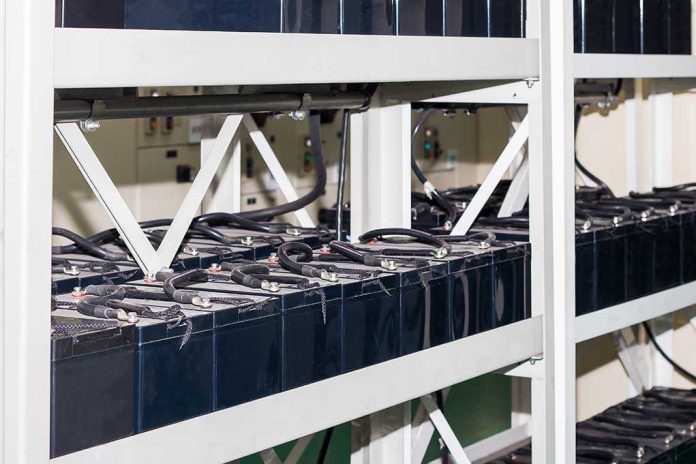
Recycling ‘dead’ lithium batteries could save billions and cut pollution, reshaping the U.S. economy and environment.
Story Snapshot
- Lithium battery recycling addresses escalating global demand.
- Recycling reduces emissions and economic costs over mining.
- Policy, technology, and infrastructure challenges remain.
- Projected to meet 10–15% of U.S. lithium demand by 2030.
The Rise of Lithium Battery Recycling
Lithium battery recycling has emerged as a pivotal solution to the increasing global demand for batteries, especially for electric vehicles (EVs) and renewable energy storage. Discarded batteries retain most of their valuable materials, such as lithium, cobalt, and nickel, which can be reused. This process significantly reduces emissions, resource utilization, and economic costs compared to the extraction of new materials through mining. However, the sector faces substantial challenges, including infrastructure development, policy support, and technological advancements, which need to be addressed to fulfill its potential.
The U.S. Inflation Reduction Act (IRA) of 2022 has played a critical role in driving lithium battery recycling efforts, allocating substantial funding to build recycling infrastructure. Between 2023 and 2025, there has been a rapid scaling of recycling capacity, technological advances, and new policy incentives across the U.S., EU, and Asia. These developments are expected to enable recycled materials to meet 10–15% of U.S. lithium demand by 2030. The recycling process also promises to unlock significant economic and environmental value, paving the way for a circular battery economy that could reduce reliance on environmentally harmful mining activities.
Policy and Technological Advancements
Technological breakthroughs have significantly improved the efficiency of lithium battery recycling. Hydrometallurgical recycling processes now achieve up to 98% recovery rates for key metals, making the process more economically viable. Automated sorting and chemistry-specific recycling techniques continue to enhance efficiency and profitability. These advancements are crucial in addressing the volatility of critical mineral prices and ensuring a stable supply chain for battery manufacturers and automakers.
Policy support remains essential for the continued growth of the recycling sector. The IRA funding accelerates domestic recycling infrastructure, while regulatory pressure to reduce waste and emissions drives the adoption of sustainable practices. Industry estimates suggest that the sector could add $10 billion to the U.S. GDP by 2030 and create 30,000 jobs by 2025, highlighting the economic benefits of robust recycling policies.
Challenges and Future Prospects
Despite promising developments, challenges remain in realizing the full potential of lithium battery recycling. Infrastructure gaps and regulatory hurdles could slow progress, while the impact of future battery chemistries on recycling economics remains uncertain. The global recycling rates also vary, with higher rates observed in Asia compared to the U.S. or EU. However, the transition from pilot projects to industrial-scale operations continues, with the sector poised for major expansion.
In the long term, lithium battery recycling promises to lower emissions, reduce mining impacts, and foster a sustainable circular battery economy. It accelerates EV adoption by stabilizing material costs and spurs innovation in battery design for recyclability. With significant implications for jobs, emissions, and global resource security, the sector is set to play a critical role in shaping the future of energy and transportation.
Sources:
Battery Recycling: How Accounting for Social and Environmental Benefits Boosts Returns
The Rise of Lithium-Ion Battery Recycling in the U.S.
Battery Recycling Supply Chain Analysis






